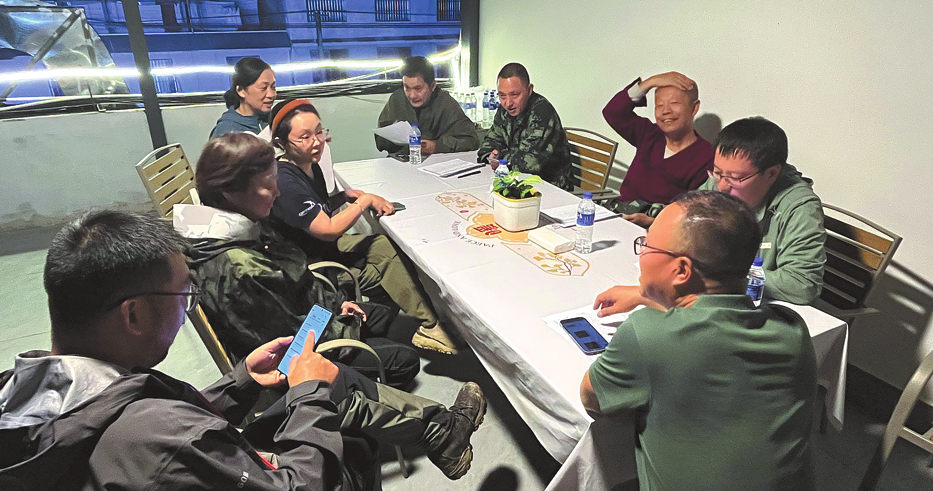Calls and conservation
Teams of birders venture into Yunnan's Lancang county for 60-hour bird race to document species


Solid checklist
The sightings of so many unique species posed a challenge to the race's judges. "We need evidence to ensure the accuracy and reliability of our survey records," Lei said.
Fortunately, many teams watched birds with advanced birding gear. Besides binoculars and telescopes, many participants used cameras to take photos of the birds and night vision devices to find birds in the evenings.
Yue Weiqiang's team of four Guangdong birders brought three night vision devices.
"We used them for night watching every day," Yue said. "It was exhausting but rewarding."
With the support of the devices, the teams recorded seven species of owls and two species of nightjars during the event, Zhong said.
A team from Beijing focused more on collecting sound evidence to prove their records.
The team leader, Li Juefei, would start recording environmental sounds while birding in the wild.
"I usually keep my recorder running all day long," he said.
"Once I hear a special bird call or song, I stop the recorder, leave a mark, and start recording again. This way, I can easily find the soundtrack later and examine it more carefully."
This method allowed them to capture unique vocalizations, providing another layer of verification for their sightings.
During the race, Li and his teammates recorded a total of 158 bird species, about 20-30 species only heard. They presented bird sound voiceprints of a few species to the judges as their evidence, which was challenging for the judges.
Han Lianxian, a retired professor from Southwest Forestry University in Kunming and a renowned ornithologist, said that few people can quickly identify a bird just based on a voiceprint. Solid evidence for a new record must include photos, he said.
"Bird-watching should involve watching, not just listening," Han said during his remarks at the closing ceremony of the event.
"First, it can verify that the call you initially heard was correct and indeed belonged to that bird. Second, bird-watching has always been about comprehensive observation — color, shape, behavior, calls and more. It's about gaining a holistic understanding of a bird, and missing any aspect would be regrettable."
Even though the judges didn't approve some 40 of the species presented by the teams, the bird race produced seven new recorded species for the area. All of them with photo evidence.
Zhang Xuelian and her team discovered a male spot-winged starling among a flock of nearly 100 chestnut-tailed starlings on farmland near Mengkuang village late in the afternoon on Nov 3. This rare species was chosen as the festival's top bird. Zhang shared the location of their sighting with other festival participants.
As the festival's closing ceremony took place in the village's newly built square on Nov 4, many participants flocked to the farmland, eager to catch a glimpse of the starling. Some were fortunate enough to spot it before the ceremony, while others had to try again afterward.
Ultimately, most bird-watchers succeeded in seeing the bird, which was a "lifer" (a new species) for many of them. "Bird-watching is often a hobby full of missed opportunities, but sometimes it rewards us with a happy ending," Lei said.
chenliang@chinadaily.com.cn
























